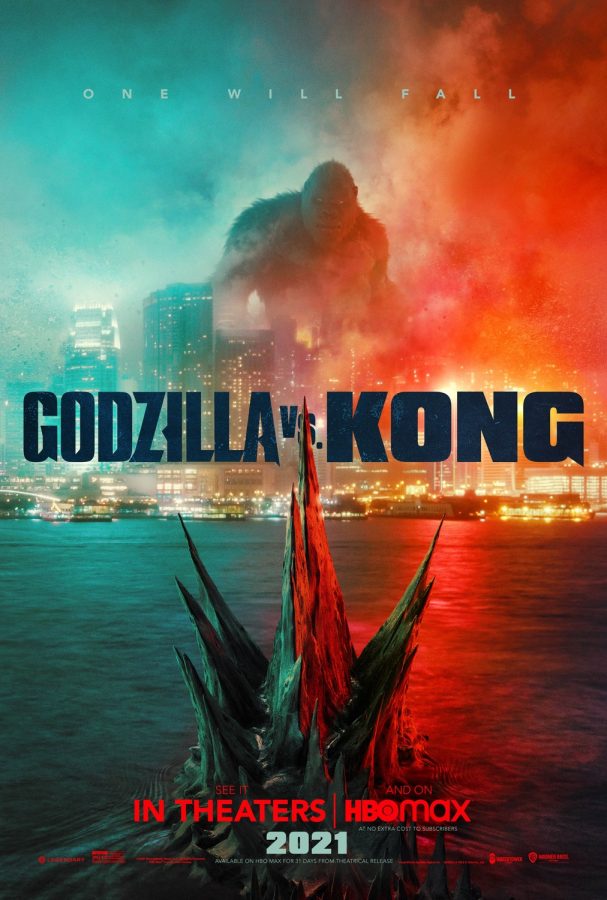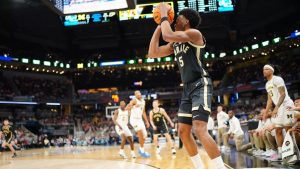Titans of cinema go head-to-head in showdown
Godzilla and King Kong, two monsters of the big screen, battle to the death in new film
April 8, 2021
The recent Warner Brothers release “Godzilla vs. Kong,” is a long-awaited blockbuster extravaganza. Directed by Adam Wingard, it is the fourth film of the studio’s “Monsterverse” saga and follows 2019’s “Godzilla: King of the Monsters”. The initial screening in China garnered great enthusiasm for this Hollywood behemoth, as it profited $70 million in the first weekend alone. The movie then set a box office record of $48 million within its first five days of opening in the pandemic-ridden U.S.
“Godzilla vs. Kong” takes an interesting shift in tone from past films, leaving viewers with mixed emotions. A common issue for these types of monster films has been that, while the action and monsters are typically excellent, most side plots involving human characters have been lackluster. This often results in mixed reviews. It is obvious that Warner Brothers has noticed the complaints, and made strides to produce a storyline that moves much faster than in earlier films. From the start, things move quickly. We get an immediate update as to what Kong has been up to, and are soon introduced to Godzilla, who is uncharacteristically destroying cities instead of working alongside humans to save them.
It’s extremely hard to explain what this film is about. The plot is not very welcoming to first-time “Monsterverse” viewers and requires a total suspension of belief in order to be engaged. There is a looming investigation from “Godzilla: King of the Monsters” into what is termed “Hollow Earth,” a theory developed about the true nature of the planet. For all of humanity, regions of the world that were thought to just be land or mountains turn out to be the remains of hibernating Titan monsters. According to the theory, below the Earth’s surface is a pocket of land where gravity works much differently. Characters end up exploring this phenomenon as an aside to Godzilla and Kong’s ancient rivalry, which is immediately introduced.
There are also antagonists with odd intentions and no depth. This part of the plot does not make much sense and is hard to follow. This gets a pass given the fact that people are primarily watching this film to see the two monsters fight.
When Godzilla and Kong finally fight, the movie does not disappoint. These scenes are a dream come true, and are exactly what fans have been waiting for. The first round takes place on the sea, where Kong is chained to an aircraft. There, Godzilla senses his presence and attacks. Soon both are immersed in a battle on the carrier and in the sea, and have chances to show off what makes them each so special.
The next battle takes place in Hong Kong in what feels like 1962’s “King Kong vs. Godzilla” if the CGI and technology were available at the time to make the fight more realistic. There is little to critique about these scenes, and the film makes clear who is the real winner.
The worst part of this film is, once again, the adventures that the human characters undertake. Millie Bobby Brown’s character, who appeared in the prior Godzilla movie, continues her story in a manner much different than the one viewers are accustomed to. Her adventures with the characters played by Bryan Tyree Henry and Julian Dennison appear to serve only as comedic relief and as an excuse to include the appeal of Brown’s celebrity in the film.
The film also showcases characters related to Kong’s side of the story, as is highlighted by a native deaf girl who, for some reason, follows the team along on highly dangerous and deadly missions. Her connection to Kong through sign language is powerful, and she becomes his soft spot.
Overall, “Godzilla vs. Kong” succeeds in pleasing fans even if it isn’t a great movie. People want to see a good fight, and they surely will get one. It is worthy of the pandemic breakthrough it is achieving, and I see few reasons not to continue producing these types of films going forward.














